Havana Back Streets
The wisdom of José Martí illustrated
in the back streets of Havana
José Martí is the Cuban turn-of-the-century intellectual revered for starting the Independence Movement, but I am drawn to him for his clearly stated simple truths, such as these two:
The first job of a man is to think for himself
Charm is a product of the unexpected
Certainly, the unexpected is what you find in Havana back streets.
Walk in any direction.
As my friends said to me on my second trip there:
“You will be very safe here. Don’t worry.There are 2 ½ million people and 1 million policemen”.
Typical dry Cuban humour.
On my first trips to Havana, there was the policeman on each block to get to know the people, see who comes and goes, with whom and doing what, this visible presence seemed less 'per block' in 2011.
Pairs of police officers walking around their beats were still to be seen – and patrol cars made nine circuits in a two hour period when I decided to count.Maybe this replaced the policeman in the dorway of every corner.
It can cause you to doubt the wisdom of exploring the Havana back streets, but wandering them has always given me so many insights and some marvellous photos.
It used to be that a foreigner walking with friends could get the Cuban friends into trouble, but that is no longer the case and that is a welcome improvement.
So I walked. I walked with my friends all over Havana back streets.
José Martí was right about the charm of the unexpected, for as I walked the personality of the city was revealed, both present - as with this typically pragmatic wheelbarrow food stall…
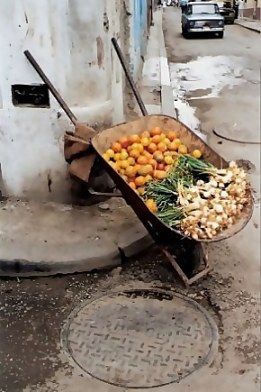
…and past, as with this lion’s head door knocker.
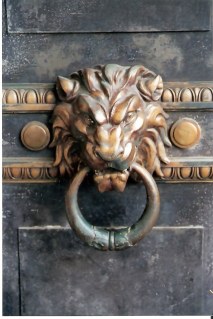
Watched by the Holy Mother
in the back streets of Havana
As I walked, it was always nice to know the Holy Mother was watching over me.
In fact, the tiny laminated Holy Mother blessing that my Cuban friend gave me on my last trip has never left my wallet. I was told it was to keep me safe until I came back.
Every now and then it falls out and reminds me that I need to return.
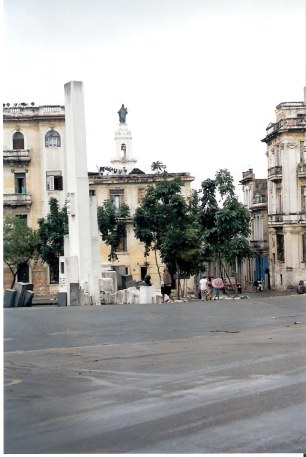
This day I could not help but think what a domestic scene this made on Havana's back streets: here was the Holy Mother and the washing hanging out below her.
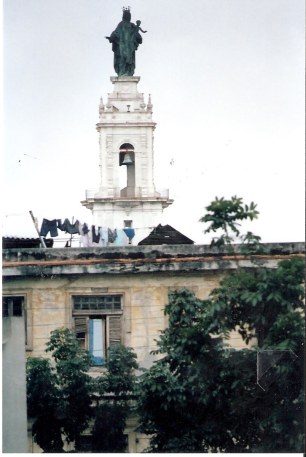
As I looked more intently, I saw a more modern sight beneath the Holy Mother’s feet: a young girl perched beside the rooftop water tank, talking on her mobile phone.
Here was a vignette of contrast between eras: the young girl represented the new form of worship.
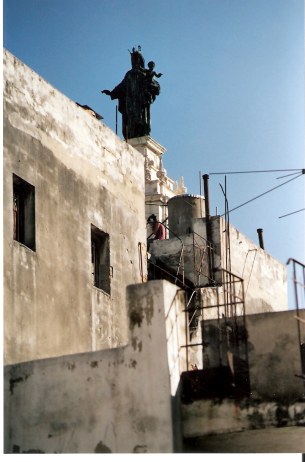
The mobile phone has taken off in Cuba, just as it did all over the world.
The costs of internal calls on them is not cheap and there is a charging system that defeated my understanding, but I noticed that people often didn’t answer the call as they would have to pay.
Instead, they would either ring the number back from a land-line, or call again putting the magic digits “88” before the dialled number: meaning 'Caller will pay'.
In this way there are lots of calls that end in a quick hang up: which seemed to be a code for 'Call me'.
One of my friends had a brilliant phone that came complete with TV viewing capability. The selection of programs is not very wide – or varied – but I was glad to see the Novella still running. This is a sort of latin-american soap opera par excellence (if you like period aristocratic melodrama with quite implausible stories in the most wonderful settings and with fabulous costumes).
The novella helped me learn Spanish – which over nine years of non-use had evaporated by 2011 but was refreshed by an intensive course in Alicante in 2012, only to be followed by years of lack of use again, then refreshed briefly via a course at my local Italian restaurant, later moved online for our many months of lockdown in 2020-2021. Then again, disuse so still needing refreshment. I now live in a part of France where children learn Spanish as their second language, so perhaps I will start again with one of the locals. My neighbour was briefly hopeful that we could converse in Spanish although he is a historical framing landowner with generations of French heritage.
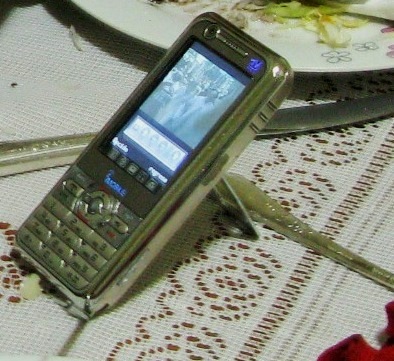
The phone of my tour guide in Havana lit up like a juke box when it rang, with coloured lights flicking up and down each side in time to the ring-tone.
The owner liked the ring-tone so much that it was allowed to play to the end before answering – which was done about three decibels above normal conversation – although I kept pointing out that there was a microphone within.
Of course the sound just gets absorbed into the usual rowdiness of Havana back streets – where people playing their different preferences of music (all of them good, I found) were quite unconcerned about the competing volumes of the choices of their neighbours.
Due to the costs – first for the phone itself, and then for the calls – the mobile is not yet the item considered a 'necessity' by those in more affluent countries.
In the case of our own electronic dependencies, I am drawn to reflect on the words of that thoughtful and much quoted person called 'Anonymous'.
I like my new telephone,
my computer works just fine,
my calculator is perfect,
but Lord, I miss my mind!
Personally, for my 'month with no plan in Cuba', I was cut off rather nicely from the world. My mobile phone suddenly and without any activity known to myself (but could have been friends testing out their German and pressing the wrong button) ceased to communicate with the outside world. It had previously flat out refused to call anyone WITHIN Cuba, though my friends could send me text messages to which I could not reply.
Additionally, where in the early 2000s I could eventually (due to the slowness of the connection) read my emails and reply – in 2011 I could SEE that there were emails but could not read them or send a new one – not from any of my accounts.
I know that many German and English friends have no such problems so obviously I had the wrong providers of choice.
I tried three times and then figured that the universe knew I needed a break from my European life, so stayed happily independent of any connection to the outside world. From time to time I thought about the title of the Jimmy Buffet song:
If The Phone Doesn't Ring,
It's Me.
Architectural 'finds' in back street Havana
In my Havana back street rambles I came across grand entrances…
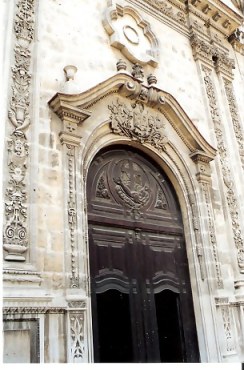
... and those more humble, like this one in a barrio.
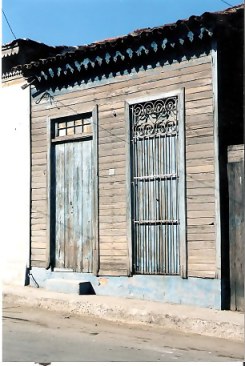
I passed many small houses that must once have been the pride of their owners, but for many years have suffered the lack of means for upkeep, like this charming 1920s villa.
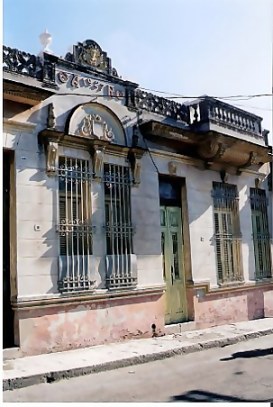
Further along was a once fine house. Now quite fallen into decay, it nevertheless seemed to retain its dignity.
Faded pastel colours and elaborate iron railings were overgrown with a riot of bougainvillea colours.
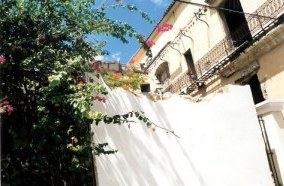
The sunlight seemed to want to reflect the former grandeur of the building - casting shadow patterns across the walls.
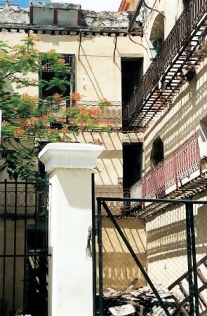
Rambling Havana back streets gives rear views of houses, and when you see the reality behind once grand facades it reveals the tragedy of the housing shortage in the city.
There are not enough places to live – yet empty, derelict, but still relatively modern apartment blocks that are 'not for we ordinary Cubans' can be seen.
Once restored – and there seemed no activity to do so at the end of 2011 - these will apparently for the foreign workers (read Chinese). At the same time, Cubans set up shanty housing and I must say, with Cuban flair they can be made amazingly comfortable with the most unlikely building materials.
Havana back streets have a fair smattering of these in empty building sites and corners of builders' yards. Some are in what had previously been garages. To these, the state may grudgingly give electrical connections and water.
Relationships are severely impacted by the reality of having nowhere to live if you break from your partner – and with many generations living under one roof through necessity, it can be a strain for all.
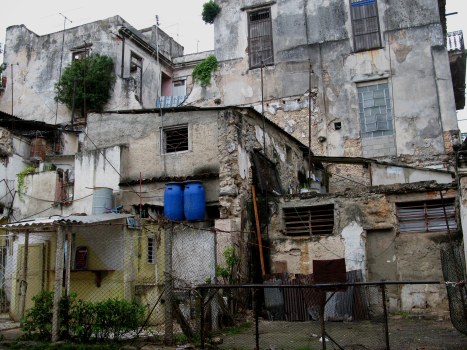
This balcony desperately needed repair, but still sported a lovely flower.
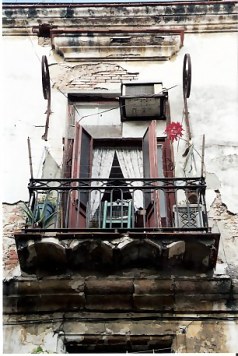
The house to which it belonged sat side by side to a restored neighbour, making its forlorn state even more pronounced.
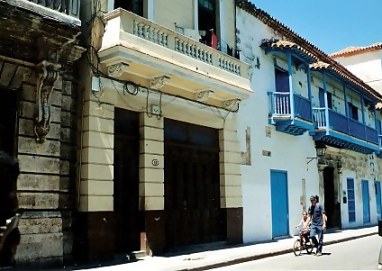
Travelling carefully
on the back streets of Havana
In the nine years since my last visit, the roads were definitely worse, and the footpaths as well.
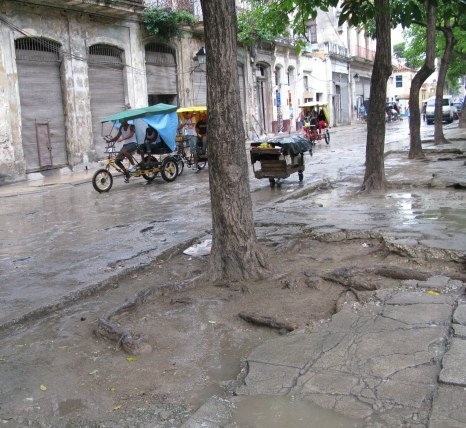
Two currencies
Of course the economy suffers from the US embargo and as usual, such political points are scored at the expense of the man-in-the-street.
People in the cities still get the Cuban food ration, but as there is a dual currency, and with most people being paid in Cuban pesos, if you fall into that group, and don't have the opportunity to earn the higher valued CUC or Cuban Convertible Peso, it makes it extremely difficult to exist in any sphere beyond that of the ration .
However, the Cubana Convertible Peso, or CUC, was in 2018 (according to Wiki)
'… by the pegged rate, the twelfth-highest-valued currency unit in the world and the highest valued "peso" unit'.
This led me to educate myself about what is a 'highest-valued currency unit'… and as usual, Wiki also had that answer:
It is the one for which: 'a single unit buys the highest number of any given other currency or the largest amount of a given item.
Most commonly the calculation is made against a major reserve currency such as the euro (EUR), the pound sterling (GBP) or the United States dollar (USD)'.
However, Wiki also distinguishes between a high-valued currency and a hard currency, which is: 'a currency with a good buying power and which is widely accepted as a reliable store of value'.
This means its purchasing power OUTSIDE the country of its origin may be much better than that of the Highest Value currency – which may just have good local buying power.
Shops for locals' rations
on the back streets of Havana
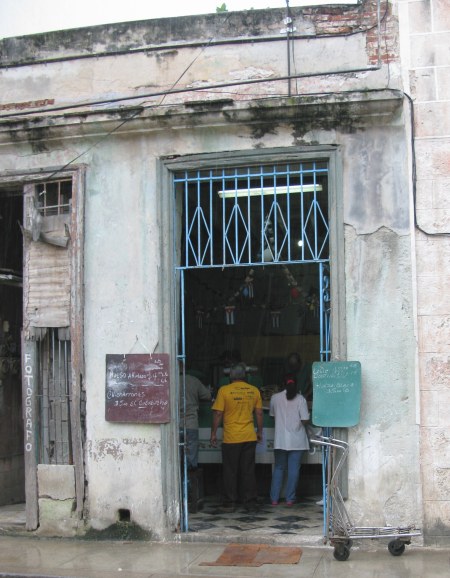
The food ration items can be purchased from approved stores and only with the relevant coupons.
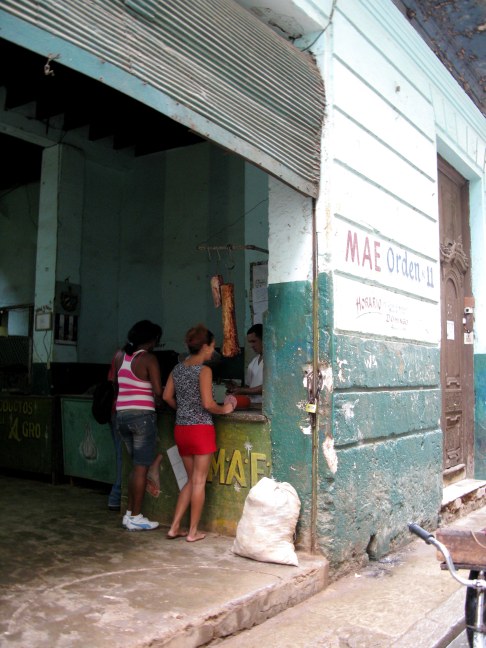
Commodities are trucked in from the country to these shops – like on this classic old truck outside a shop in the UNESCO Heritage area of old Havana .
In 2024the government announced that the Ration-book System that has been in place since 1962 will remain in place in 2025 But with a reduction in the quantity of food. The result has been a disturbing challenge for families to find eggs, bread, rice, and sugar.
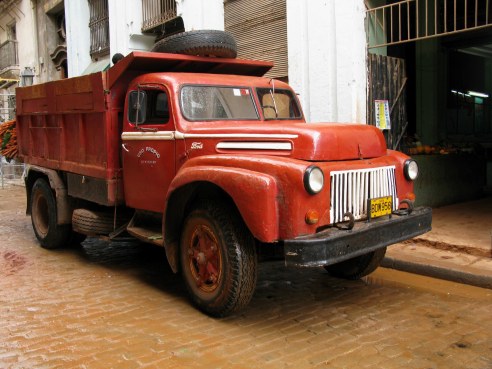
It had a load of carrots.
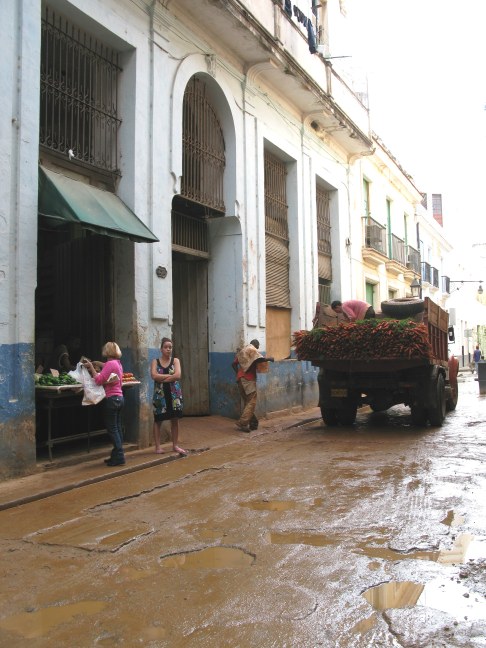
There are 'supermarkets' in Havana and they stock a wider range of goods – but for them the payment must be in CUCs, the currency which we, as tourists operate. Even then, the range of goods from which to select is limited.
In the past, (and it hadn’t improved by the end of 2011) I could never find the spices or herbs I needed, so now I pack for my friends a whole range of packets of herbs and spices, packet soups, chopped peel, glacé cherries, candy “sprinkles” for cakes, vanilla beans etc., so they could cook with a bit more variation.
Havana small street businesses
Although the infrastructure hadn’t improved over my nine year absence, one very great improvement was that it is now possible within the system to have your own little business.
For some this means having the ability to legally sell your home-grown-produce, and this you can see in many forms on Havana back streets.
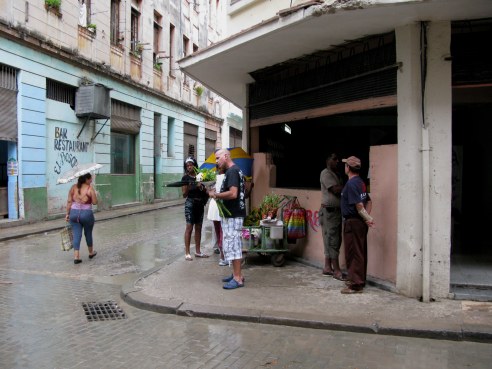
You can operate your carpentry shop…
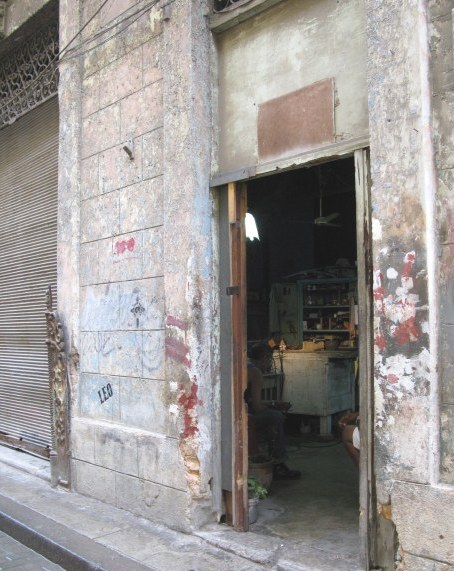
..or to run a shooting gallery – Cuban style.
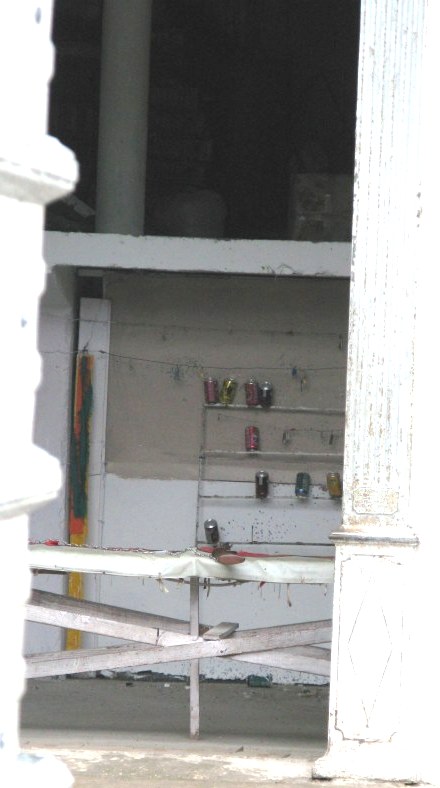
Electrical wiring on the back streets of Havana
Outside the UNESCO restoration district of Havana Viejo, electric wires run all over the place, and would make any electrician pale at how casually they droop down walls …
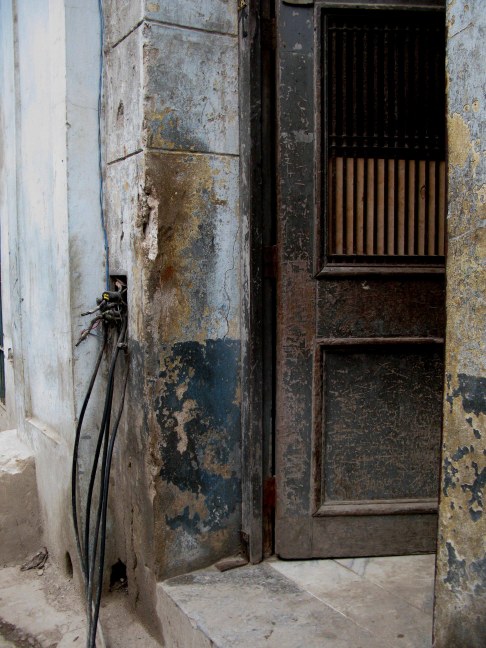
..or run from one outlet in one house to who knows where in another…
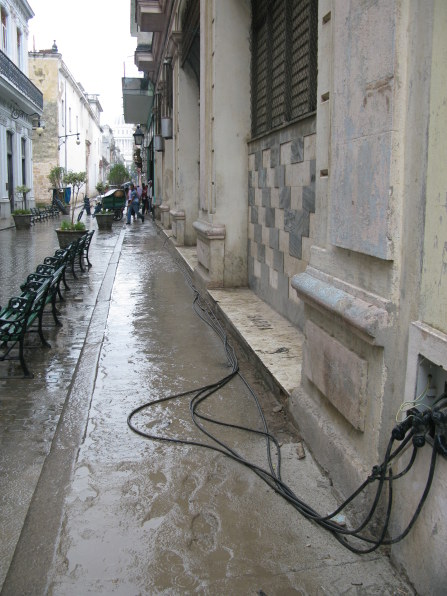
…let alone the internal arrangements.
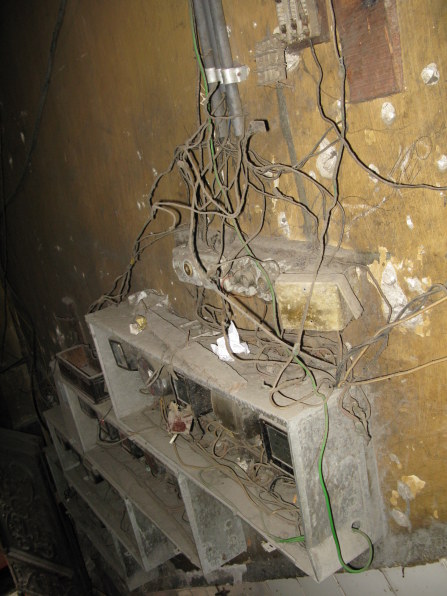
Here, apartment-house central wiring runs your blood cold – and the only modern contribution is the state meter to accurately gather the relevant charging information
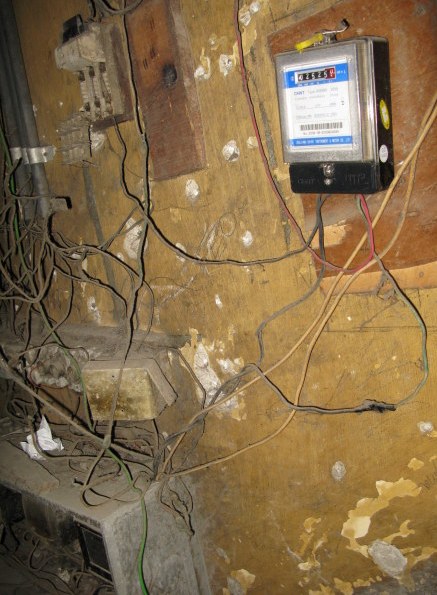
Inside the apartments this 'direct to the mains' connection has wires hand-inserted into the socket.
Not only in Havana back streets, but in rural hamlets and inland cities this is quite a normal procedure – as is the round heating bar on a similar electrical wire I saw in another Havana back street. It was connected the same way and then plunged into a pot such as this to heat the water.
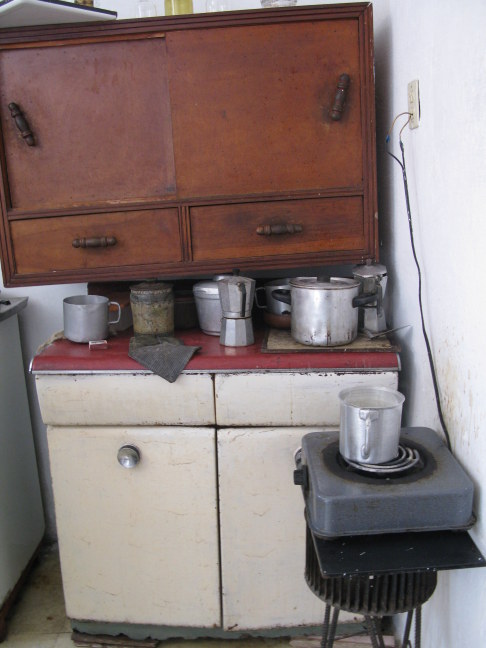
The chance of electrocuting yourself is an ever present reality, and as George Carlin wittily said:
You should always be careful around electricity,
for although the power companies control our supply,
it’s really organised lightning.
Joking aside, the public phones in Havana haven’t been vandalised and do work, which puts some of our cities to shame.
Public phones, curious methods of carrying goods, and singing children on the back streets of Havana
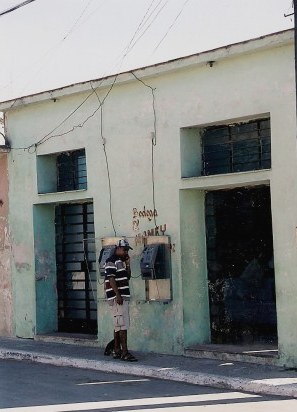
In my back street rambles I was nearly run down while taking photos – by a man carrying a huge wine barrel on his back while riding a bicycle.
Gives new meaning to the term 'He barrelled on past'.
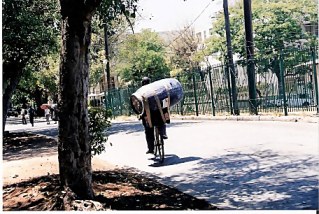
I passed a class of young school children singing as they walked with their teacher and remembered the striking social comment of the comparative world literacy standards.
Literacy rates in Cuba are amongst the highest in the world.
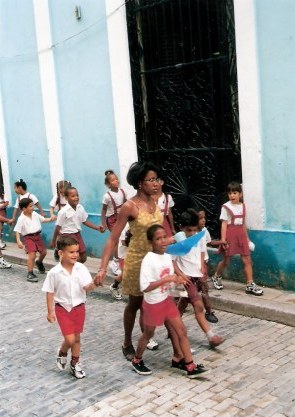
Great Cuban education
After spending years living in America, where every week someone would comment on what good English I spoke,which they found remarkable since I came from Australia, I came to realise they were confusing Australia with Austria.
One of my work colleagues came back from a recent trip to Austria with a black T Shirt that had a yellow kangaroo on the front – like the road signs. It said: 'There are no kangaroos in Austria'. I got the joke.
By contrast, in Havana I found people extremely well-informed about other lands.
I had a fascinating conversation with a young man who chatted to me on the Prado about the Republican issue in Australia, the recent politics, about Australia being the driest continent, and about Permaculture.
Not bad for an unemployed person.
Permaculture is sustainable land use that harnesses the existing environment and land contours and is regularly taught in Cuba by Australians.
It was through one of my dancing friends being friends with one of the permaculture teachers that I was lucky enough to join a wider circle of Cuban friends beyond the street folk I had befriended on my first trip.
Walking with them on Havana back streets away from the tourist areas I came across the man with the apple peeling machine, busy at work under the trees.
Apple peeling
on the back streets of Havana
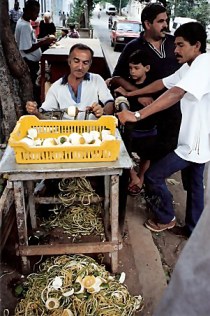
I was never quite sure why.
Was it a sort of contract coring/peeling service, or did he sell the naked apples on the street?
Looking at the photos now, I realise that I never asked.
At any rate, both he and his peelings made great photos!
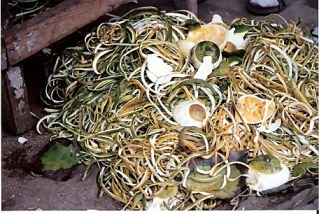
Barrio Chino - Chinatown Havana
My friends also took me to China Town – Barrio Hino, according to the sign - which over the years has misplaced the "C" in Chino.
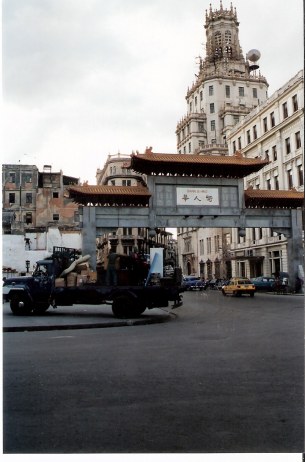
The food there is unspectacular, but it’s a good place for me when I am tired of cooking for upwards of 10 people and craving something different.
Since the food outside a tourist hotel is bland – plus the fact that a diet of black beans and rice with a sampling of pork or chicken gets old after a while to those of us used to more choice - a different kind of unspectacular is always welcome.
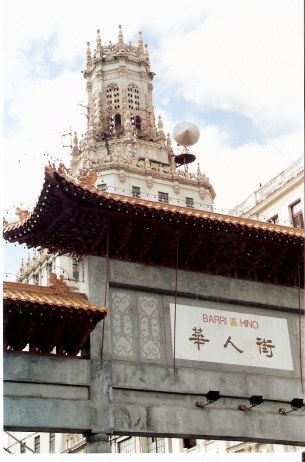
As Chinese workers were brought to Cuba to replace, or to work alongside African slaves, this was once one of the largest and most active China Towns in Latin America (at its largest covering 44 blocks of the city) .
Inevitably, as the number of Chinese immigrants increased, so did the size of Barrio Chino.
There are a number of restaurants here, and for some reason Chinatown is exempt from laws that are applied to other privately owned restaurants, so they can have more than 12 seats and also - importantly, serve seafood.
These sights and experiences came initially from becoming friends with someone I asked to direct me to the bank on my first trip.
Banking in Havana not being a straightforward affair, he stayed to help me through the process and so we talked. When you learn about the complexity and reality of everyday Cuban life it gives a new perspective.We are still close friends and he is now legally in the United States forging a new and better life.
In fact, after six trips to Havana and becoming a godmother to the child of one of my friends, I came to the conclusion that actually NO ONE understands the complexity in Cuba.
It may or may not be deliberate. However, to work out how something is done you often need collaboration – with everyone bringing his or her piece of the jigsaw on the subject at hand.
Havana: full of beauty in unexpected places
Roaming by mistake up a deserted stairwell in Havana I found this wonderful reflection.
I have returned there a few times on later trips and never at the exact time to get a photo such as this.
As they say: there are no wrong turns, just unexpected paths - and the unexpeceted so often brings us beauty - if we only slow down long enough to catch such moments.
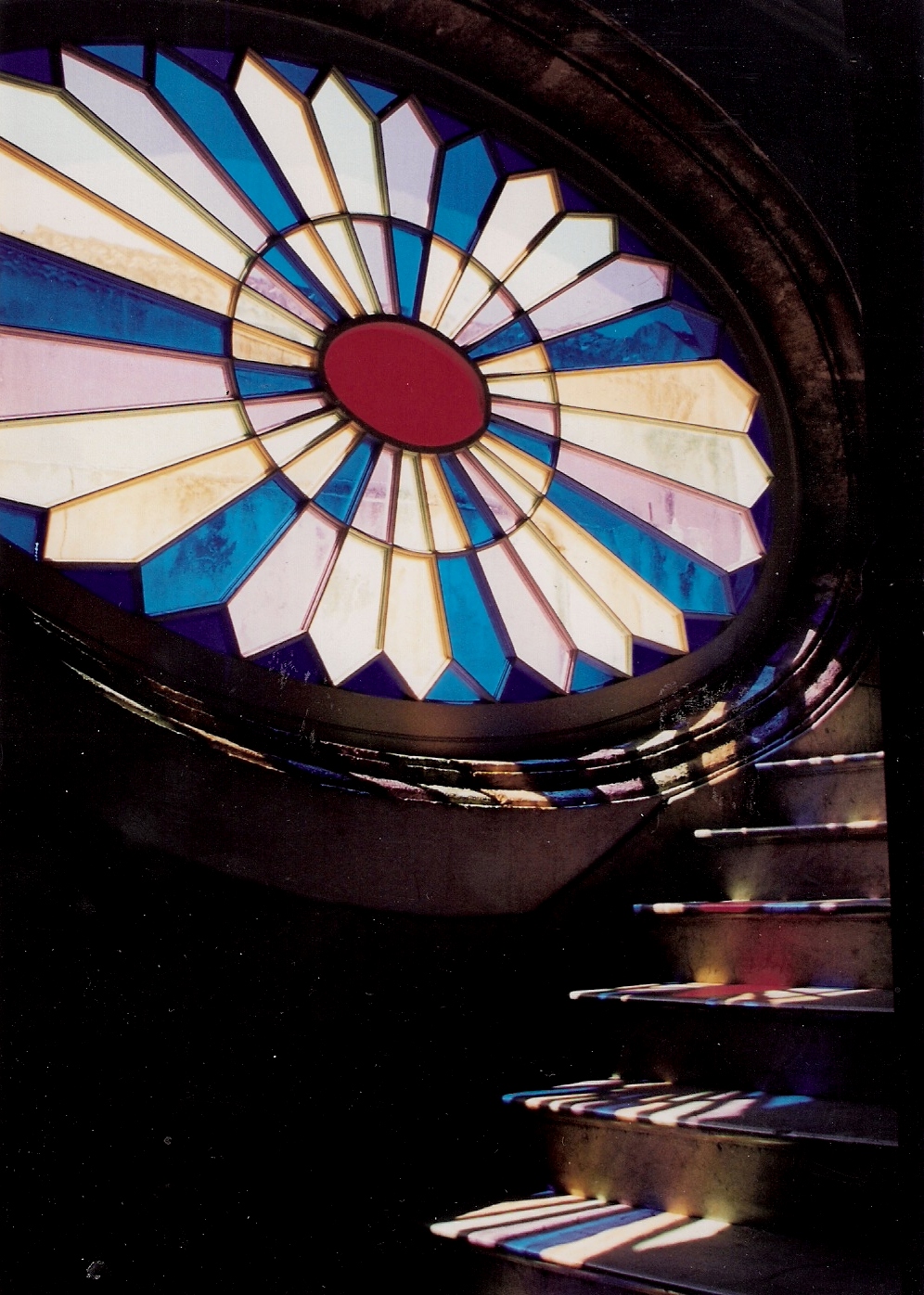
Locals on the back streets of Havana
Other tourists have complained bitterly about being approached by Cubans.
I always wonder about the lives of those making the approach and tend to get into conversation. Inevitably, as my grandmother used to say:
To know all is to understand all.
Wise woman my grandmother.
My friends have been worried about the trust issue.
Will I be ripped off by my Cuban friends since I have relatively so much, and they so little?
Hemingway, who loved Cuba, is quoted as saying:
The only way to find out if you can trust someone,
is to trust someone.
When on each trip I placed my 'kitty' of funds in their hands, I found my Cuban friends made far more economical use of my money than I would have.
They took great pride in adding to the general fund the commission earned for bringing me to a restaurant or bar - something they could have kept to themselves for at the outset I was unaware of the practice.
Trust breeds trust.
Havana pages
Agricultural
Fair
The
Art of Dominoes
Capitol
Building
Havana
Classic Cars
Creative
transport in Havana
Malecón
- Fish and Philosophy
Havana
Angels
Havana
Grandeur
Political
Demonstration
Street
Water Skiing
Trinidad de Cuba pages
Palacio
Cantero Museum
Trinidad
de Cuba
Remedios
Remedios
churches
Parrandas
& Pedlars
Other Cuban pages
CienfuegosAlmendares River Voodoo
Backroad Travel
Bay of Pigs
Viñales - Pinar del Rio






